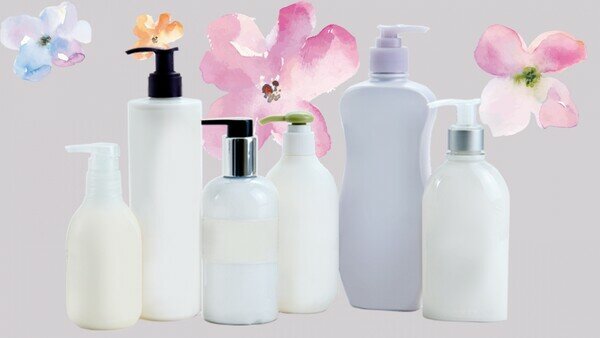Body lotions are among the most commonly-used skin care products. Applying them appropriately, not only helps maintaining skin hydration, but also help reducing skin allergies and reoccurrence of eczema. If, however, consumers inadvertently use products that contain certain numbers of potential allergens, the effect could be completely the reverse. The Consumer Council conducted a market survey of 61 body lotion products available in the market, reviewing their ingredients and label information. The Council found that half the lotions were labelled to contain fragrance allergens, increasing the chance of triggering potential allergic reactions and irritations in some users. Some products' labels specifying that they contain formaldehyde-releasing preservatives, which might cause skin irritations in eczema patients. The Council reminds consumers, that when buying a body lotion, read the ingredient list carefully, to reduce chances of allergic reaction after use.
At present, there are no regulations in Hong Kong on labelling of detailed ingredient lists and potential allergens for skin care and cosmetic products. However, this information is of paramount importance to consumers when choosing a skin care product. The Council recommends the authority make reference to the European Union regulation, stipulating that specific fragrance allergens with concentration level above the thresholds must be labelled on the ingredient lists of skin care products. The Council simultaneously calls on manufacturers to improve transparency by labelling all ingredients, to allow consumers to make informed choices.
Among the 61 models under review, 15 claimed they were suitable for all skin types, 6 for normal to dry skin, 7 for dry to very dry skin, 19 claimed to be suitable for people with sensitive skin and even eczema, 6 for infants and adults, and 8 made no claims concerning suitable skin type. Prices ranged between $18 and $675 per bottle.
Overall, only 4 models labelled ingredients clear of those of higher allergy-causing potential, including lanolin, fragrance and fragrance allergens, formaldehyde-releasing preservatives, methylisothiazolinone (MIT), and endocrine disrupting chemicals. Prices of these products ranged between $179 and $240, consumers could purchase body lotions with no common allergens at a relatively lower price, providing they read the product ingredient list carefully.
Fragrance and fragrance allergens are the most common cause of allergies in skin care products. According to the ingredient list, only 10 of the models did not have fragrance or fragrance allergens. In addition, 33 models indicated they contained from 1 to 12 types of fragrance allergens on their product labels. Among them, 2 models disclosed having 10 or more fragrance allergens. There were 6 models labelled as having the fragrance allergen HICC, for short. The Scientific Committee on Consumer Safety of European Commission has found many allergy cases related to HICC, therefore, advises against the use of HICC in consumer products.
The Council also reminds parents that not all body lotions are suitable for infants and young children. Some products, for example, contain high concentration of certain humectants which may cause skin sensitivity in infants. An overseas study has recommended against use of products containing propylene glycol on infants and children under 2 years of age as use of the substance may cause dermatitis. Skin care products using urea as an important component may cause skin irritation or burning sensations among children. Of the 6 products claimed suitable for use in infants, 1 was labelled as containing urea. From all samples, the Council found that 16 were indicated to contain propylene glycol and 5 containing urea. Parents need to pay extra attention if they are in the habit of sharing skin care products with their children.
Although preservatives help preventing deterioration of skin care products, some preservatives are more likely to cause skin irritations or allergies. Eczema patients may experience adverse reactions to cosmetic products containing formaldehyde-releasing preservatives. Among all samples, 7 were marked as containing formaldehyde-releasing preservatives. Even 1 claimed to be suitable for eczema patients, the Council reminds consumers concerned to select body lotion carefully.
MIT is another preservative more likely to trigger allergic reactions. 3 of the models were indicated as containing the ingredient. Young children, people with sensitive skins and eczema and those with wounds were warned especially to avoid using products containing MIT. Moreover, 4 models were labelled to contain UV filters, such as benzophenone-3, benzophenone-4 and ethylhexyl methoxycinnamate, all of which present allergenic risks and are unsuitable for application near wounds or the eyes.
In addition, 2 models labelled to contain lanolin, whose application near a wound could develop rash, redness and swelling.
30 models disclosed the presence of mineral oil, petrolatum, paraffin, microcrystalline wax and paraffin soft white. These substances are commonly used to help reducing trans-epidermal water loss and help maintain skin hydration indirectly. Mineral oils are acceptable for use in cosmetics if properly refined. Consumers who apply body lotions containing mineral oils are unlikely to incur health risks.
The Council also has discovered that most reviewed samples disclosed clear information on period of use, yet in different indication including period after opening, expiry date, date of manufacture, and shelf life. 3 of the models provided more comprehensive information, disclosing manufacture date, expiry date and period after opening.
When applying body lotions, consumers may take note of the followings:
- Study the product ingredient list and avoid using any products that contain allergens more likely to cause skin irritations;
- Avoid applying skin care products containing high concentration of propylene glycol or urea on infants and young children, to reduce possibility of allergies and irritations to their skin;
- Choose appropriate body moisturising products according to season, personal skin type and condition. After showering or cleansing the skin is a good time to apply body lotions;
- Period after opening the container normally ranges between 4 and 24 months. Finish using the product as quickly as possible after opening.
The Consumer Council reserves all its right (including copyright) in respect of CHOICE magazine and Online CHOICE.



